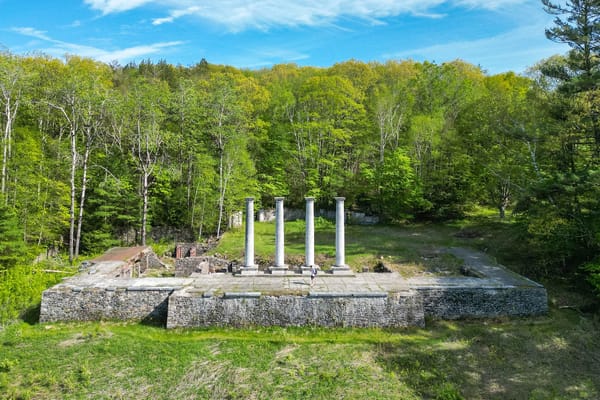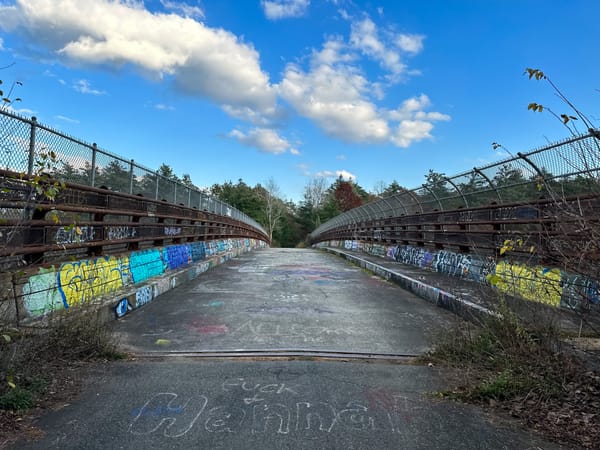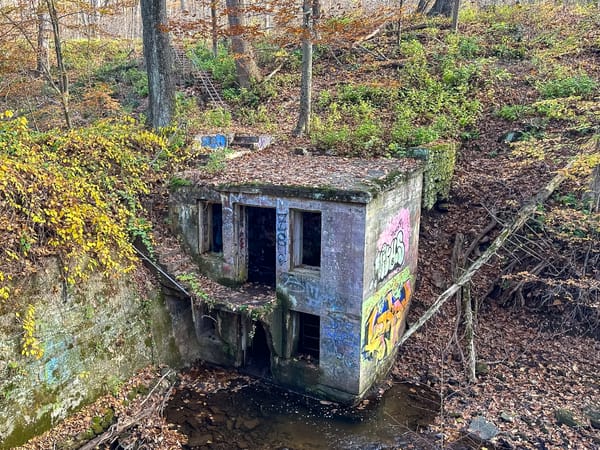Battery Cooke (Jamestown, RI)
Battery Cooke in Jamestown, Rhode Island, is an abandoned Endicott-Era gun battery at Fort Wetherill State Park.
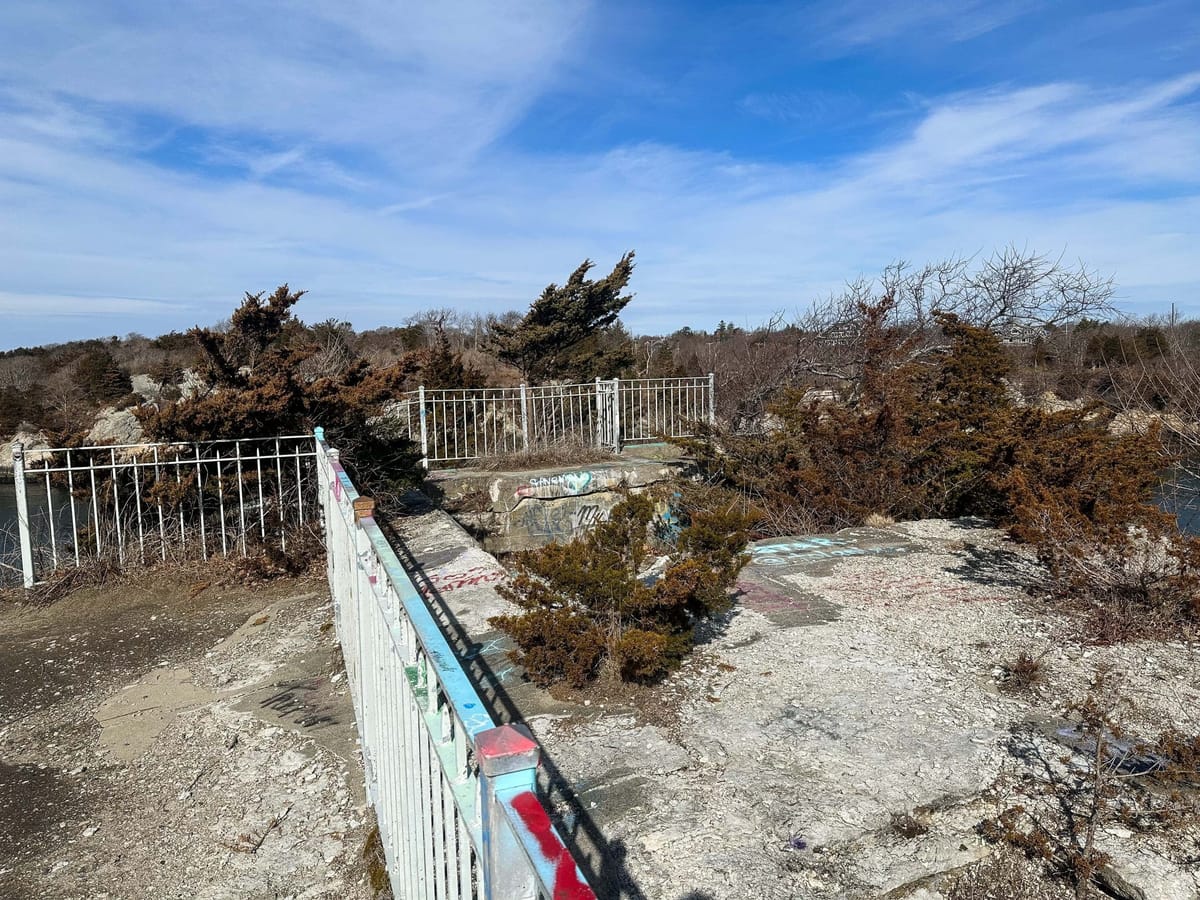
Overlooking the rocky cliffs and sweeping ocean views of Fort Wetherill State Park in Jamestown, Rhode Island, stands the haunting shell of Battery Cooke — a relic from the early 20th century that once played a vital role in defending Narragansett Bay.
Built during the Endicott Period (1890–1910), when the United States modernized its coastal defenses, Battery Cooke is one of several gun batteries that transformed Fort Wetherill into one of Rhode Island’s most formidable military installations. Today, the battery sits silent — abandoned, graffiti-covered, and irresistibly atmospheric — drawing both history buffs and urban explorers alike.
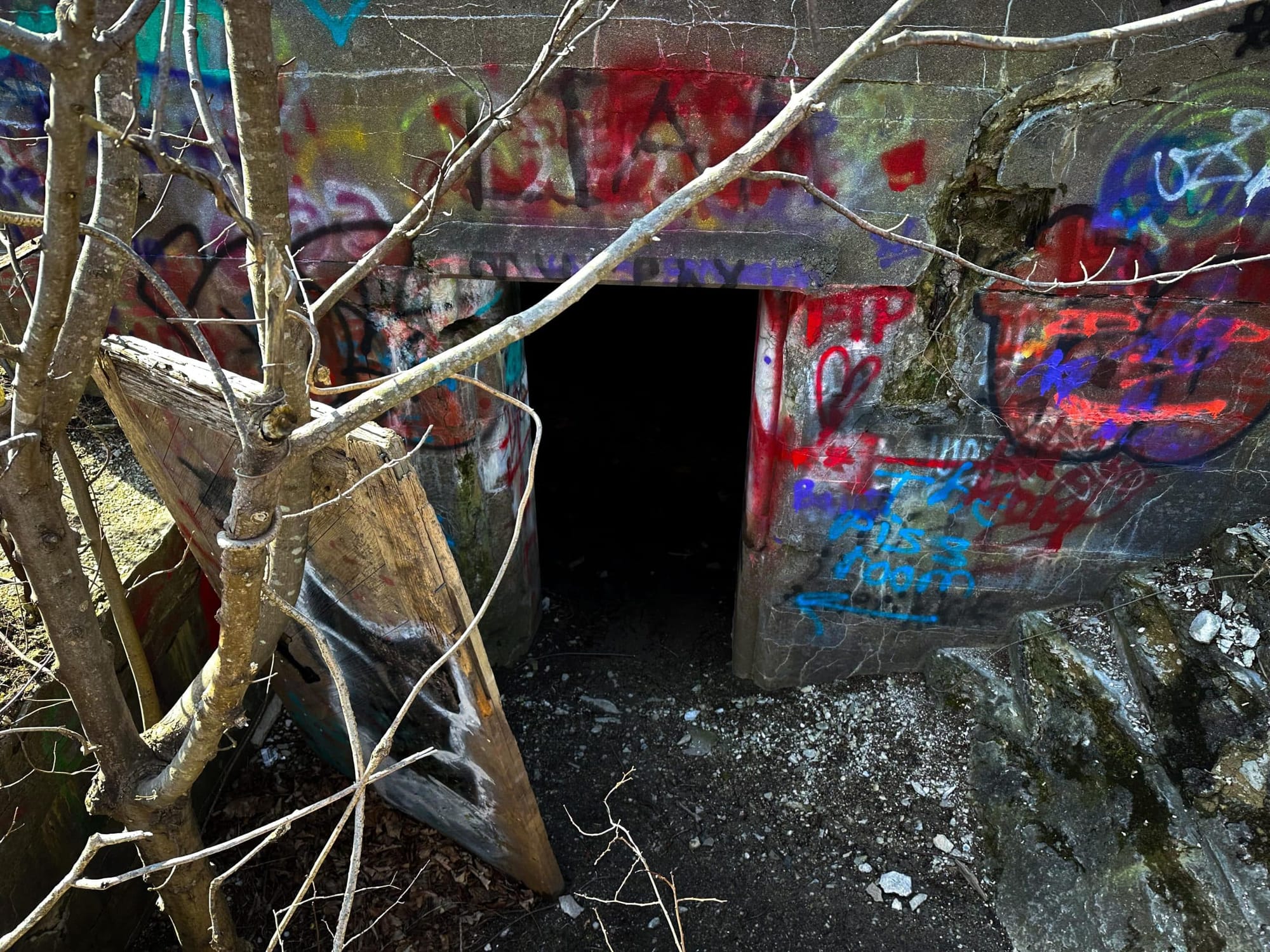
The Establishment of Battery Cooke
After the Civil War, rapid advances in weapon technology rendered traditional masonry forts and smoothbore cannons obsolete. In 1885, the Endicott Board was formed to develop a new generation of concrete fortifications capable of withstanding modern warfare. The result was the Endicott System, a nationwide defense initiative constructed between 1890 and 1910.
As part of this program, the Harbor Defenses of Narragansett Bay were extensively upgraded. In 1900, the Army officially established Fort Wetherill on the southern tip of Jamestown, where several new batteries were planned — including Battery Cooke.

Construction and Armament
Construction on Battery Cooke began in the early 1900s (shortly after the fort’s founding) and followed the typical two-level layout of the Endicott Era. The battery was built of reinforced concrete and equipped with coastal artillery guns designed to protect the mouth of Narragansett Bay and nearby naval assets in Newport.
While the exact completion and equipment dates vary among sources, Battery Cooke was likely operational by the early 1910s, joining a network of powerful defensive structures such as Battery Varnum, Battery Dickenson, and Battery Walbach within Fort Wetherill.

Battery Cooke Through the World Wars
World War I
When the United States entered World War I, many coastal forts were stripped of their armaments to support overseas campaigns. Large-caliber gun tubes were dismantled and repurposed for field use in Europe.
However, Battery Cooke escaped these redistributions — its guns remained in place throughout the war, and it survived the widespread 1920 disarmament program that deactivated many Endicott batteries across New England.
World War II
By the time World War II began, technology and warfare had changed dramatically. Many of Fort Wetherill’s older gun batteries, including Battery Cooke, were considered obsolete compared to the new long-range coastal guns and radar-guided defenses installed nearby.
During the 1940s, Fort Wetherill was repurposed for training, observation, and coastal surveillance, while Battery Cooke was left behind as a relic of an earlier era. It was eventually abandoned, marking the end of its brief but significant chapter in Rhode Island’s coastal defense history.
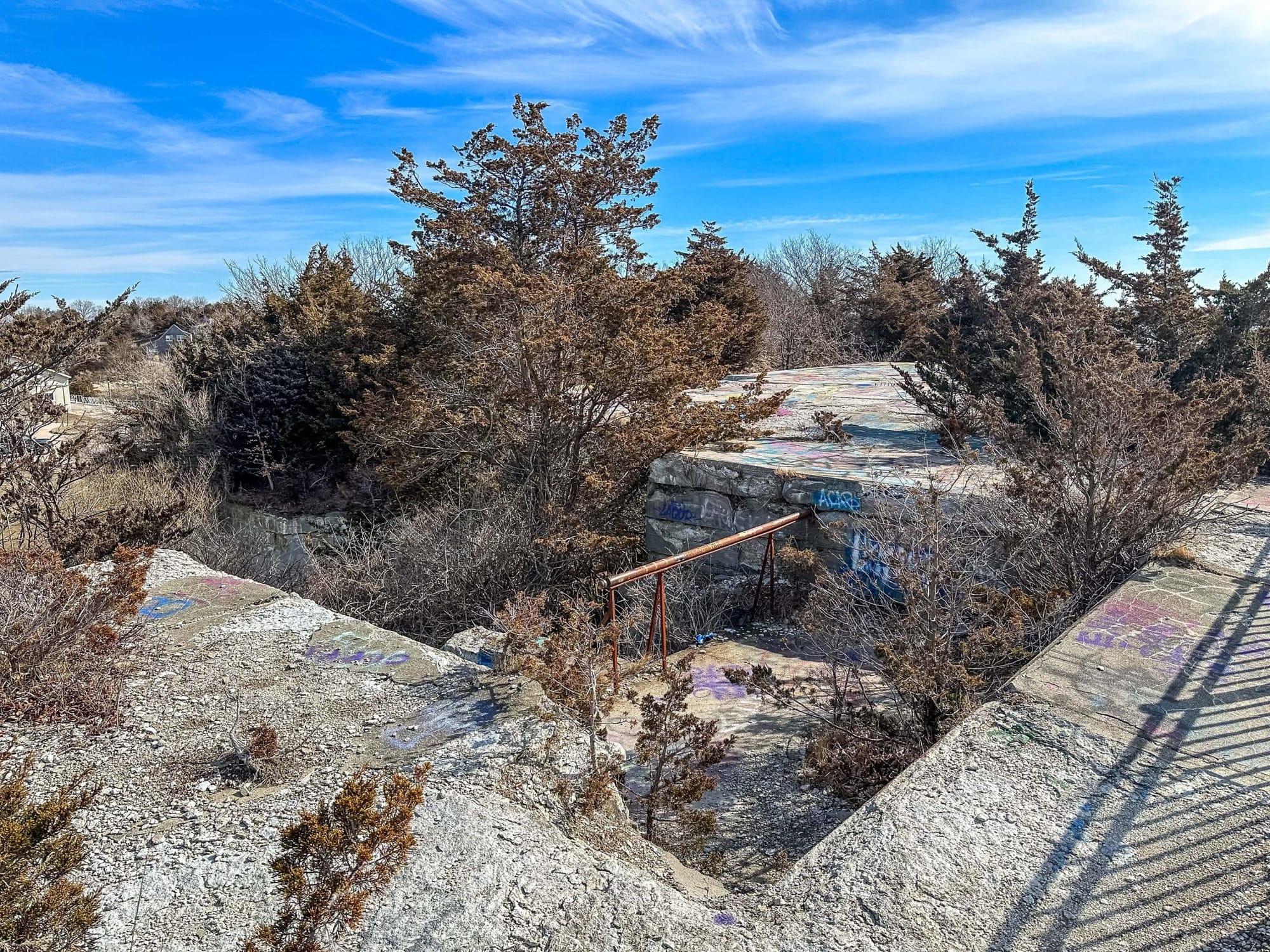
What Remains of Battery Cooke Today
Today, Battery Cooke lies within Fort Wetherill State Park, which opened to the public in 1972. The site is one of seven surviving gun batteries scattered across the park — each one a fascinating example of early 20th-century military engineering.
Visitors can walk across the top of the structure or explore inside its concrete corridors, where open stairways and rusting doorframes lead through dimly lit rooms and echoing chambers. Many of the walls are now covered in colorful graffiti, giving the site a unique mix of decay and artistry.
Because it is an abandoned structure, visitors should exercise caution when exploring — watch your footing, bring a flashlight, and avoid unstable areas.
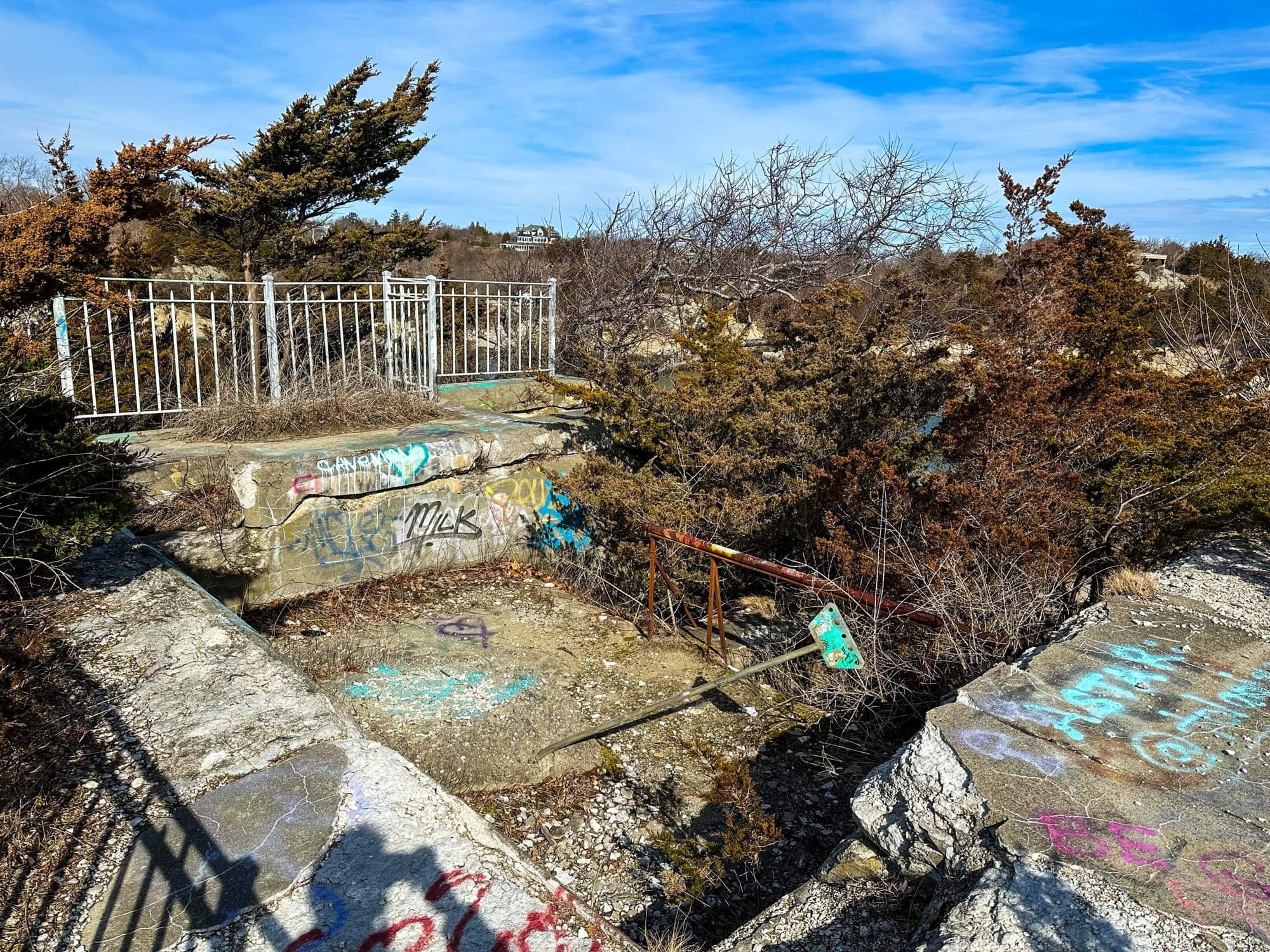
Visiting Battery Cooke at Fort Wetherill
Fort Wetherill State Park is one of Rhode Island’s most dramatic and scenic coastal destinations, offering sweeping ocean views, cliffside trails, and access to several abandoned military structures, including Battery Cooke.

Visitor Details
- 📍 Address: Fort Wetherill Road, Jamestown, Rhode Island
- 🌐 GPS Coordinates: 41.477944, -71.359000
- 🅿️ Parking: Roughly two dozen free parking spots are available at the end of Fort Wetherill Road near the main fort. Additional parking is available throughout the park.
- ⏰ Access: Open daily, dawn to dusk
- ⚠️ Tip: Bring sturdy shoes and a flashlight if you plan to explore inside the structures.
Battery Cooke remains open to the public as part of the park, though it is unmaintained and entirely self-guided. The site’s haunting beauty and sense of history make it a must-visit for those interested in Rhode Island’s abandoned military architecture.

Why Battery Cooke Matters
More than just an old fortification, Battery Cooke represents an era of transformation in America’s approach to coastal defense. It bridges the gap between 19th-century masonry forts and the concrete, gun-mounted defenses of the 20th century.
Today, the structure endures as a haunting reminder of both military history and nature’s reclaiming power. Standing atop Battery Cooke, with the Atlantic stretching endlessly before you, it’s easy to imagine the soldiers who once watched from these same cliffs — guarding the entrance to Narragansett Bay more than a century ago.

Quick Facts
- 🏗 Constructed: Early 1900s (Endicott Period)
- ⚙️ Type: Reinforced concrete coastal gun battery
- 🪖 Fort: Part of Fort Wetherill, Jamestown, RI
- 🕰 Status: Abandoned
- 🏞 Now part of: Fort Wetherill State Park (est. 1972)
- 🎨 Condition: Accessible but covered in graffiti
- 📷 Tip: Early morning or golden hour provides the best lighting for photos.
Final Thoughts
Whether you’re a history enthusiast, urban explorer, or Rhode Island local, Battery Cooke at Fort Wetherill offers an unforgettable blend of history, mystery, and oceanfront beauty. Its cracked concrete and echoing chambers tell the story of an America preparing for wars that would reshape the world — and the powerful forces of time that have since taken it back.

